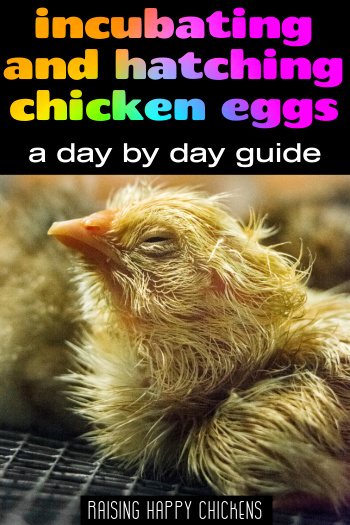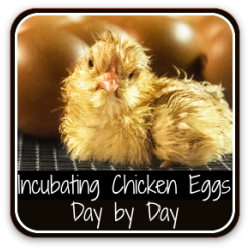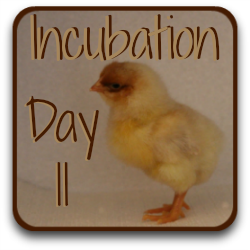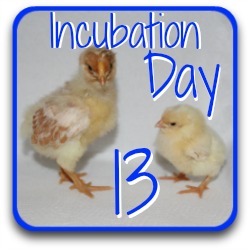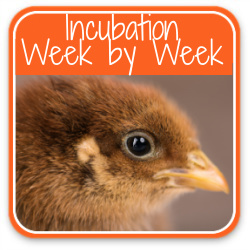- Home
- Incubation day by day
- Day 12
How to incubate an egg: day 12.
What's happening at this point of incubation, how much has the chick grown, what do we need to do today and what could go wrong?
Another exciting day in the incubated chicken egg, as the chick's heartbeat now starts to increase and will reach between 206 and 231 beats per minute. It will remain at this level now until day 20, when it begins to slow down in preparation for hatching.
The heart pulsating will continue to push the chick in the amniotic fluid, so the embryo in candling can seem to be moving. However, its size now means the movements are less obvious than earlier in the incubation process.

What's going on in the egg today?
- With only another nine days' incubation to go, the chicken is now putting on rapid growth and starting to fill the egg.
- The chorioallanotoic membrane is closed and completely encloses the yolk, covering it with blood vessels which are critical in enabling the embryo to absorb oxygen.
- This membrane will shortly fuse with the membrane of the inner shell, which enables the exchange of oxygen and carbon monoxide between the embryo and the outside world.
- If we could look inside the egg, we'd see the embryo lying curled comfortably in the middle of the yolk sac.
What's happening to the chick at day 12?
How to incubate an egg at day 12 is very straightforward: processes which have begun earlier in incubation simply continue today, and continue to do so for the rest of the incubation period.
All we need to do is remain consistent.
Please note: the image below is a commissioned piece and is subject to international copyright laws. I am the sole copyright owner.
It must not be used, copied or reproduced anywhere without my permission.
Contact me for details and permissions for this and all other images on this page.
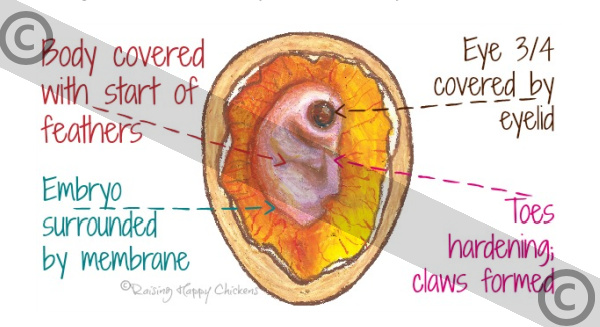
- The lower eyelid continues its progress growing upwards. It now covers between two thirds and one quarter of the eyeball.
- Feather follicles are growing around the ear and upper eyelid. The spine is covered with a very fine down.
- Under a microscope, it's possible to see tiny down feathers all along the spine.
- The embryo continues to take calcium from the eggshell, using it to harden the toes, claws and ribs.
- That's why it's critically important that a hen whose eggs will be used for incubation has an excellent supply of calcium. To discover how to make sure of this see my article about oyster shell for chickens.
How to incubate an egg: candling at day 12.
From now on, as each day progresses all we'll be able to see is the yolk, the embryo and possibly some blood vessels.
The embryo continues to move but it's not always possible to see, because space in the egg is decreasing and less room to move freely.

Even with the picture altered to enhance it, it's not easy to see clearly what's going on.
In the lighter green area there are blood vessels, but within the next couple of days even they will become unclear as the embryo steadily grows.
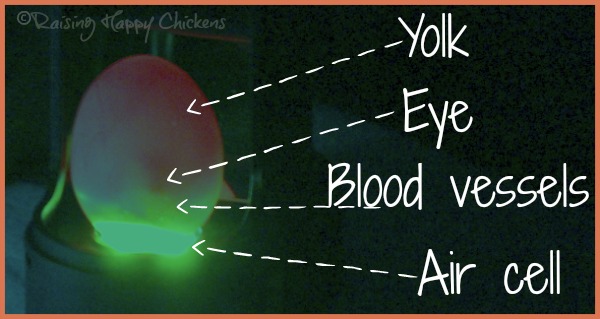
The air cell continues to grow. Over the next several days, its increased size will be a good indicator of continued embryo development.
How to incubate an egg: what should we be doing today?
- As we have from the start of incubation, the temperature and humidity levels need to be monitored and the eggs still need to be turned.
- If you candled at days 7 and / or 12 there is no need to candle again now. If you do, make sure you mark the air cell. It's here the chick will first take a breath before breaking through the eggshell.
- The Light Sussex egg below was candled at day 7, when fertility was noted as successful and the air cell first marked, and days 10 and 12, when I marked the growing air cell.
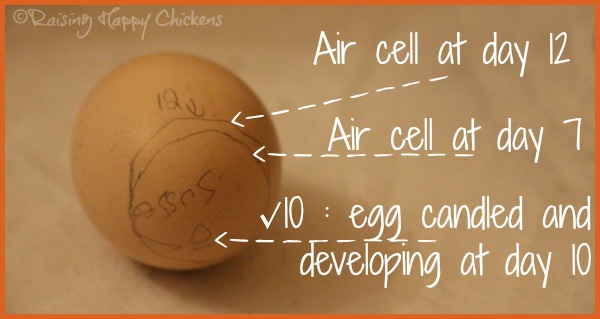
- Very occasionally, a chick won't be able to place itself in the right position for hatching. Knowing where the air cell the chick is will help determine whether the chick is pipping in the right place.
- A chick who starts to break through the egg at the "wrong" end, that is away from the air cell, can still survive. We will look at this in more detail later in the series.
Can anything go wrong at this stage?
Day 12 is the optimum time for eggs to explode in the incubator.
It's extremely important that each time you go near your incubator or lift its lid for any reason, you take note of any bad smells.
When you candle the eggs, watch out for tell-tale marks which suggest the egg is cracked. If there is any sign of liquid or a kind of dark coloured goo on the outside of the egg, get rid of it immediately.
A cracked egg which has not oozed may be saved, but an egg which has cracked and oozed will not hatch. If it is left in the humidity and warmth of an incubator, it is likely to explode and shower bacteria on the other eggs.
And if that happens, your hatch will be seriously compromised.
Make sure when candling incubated chicken eggs that you observe strict hygiene processes. Eggs become porous during incubation, and bacteria are easily transmitted through the shell.
- Use a good quality, medicated hand sanitiser. (This is an affiliate link which means that if you click the link and buy a product, I earn a small commission).
- Ensure all surfaces, including the candler, are kept spotlessly clean.
How to incubate an egg: question of the day.
One of my eggs seems to have an odd-shaped air cell. Should I discard it?
This is sometimes a particular problem with eggs which have been sent by post.
The rough handling and jolting in transit can cause the membrane to become detached from the shell, even when the egg is well packed. It's not obvious early in incubation but becomes clearer as the air cell develops.
Below is a Lemon Millefleur Sablepoot egg which was sent to me by post. Even though it was very well packed, its membrane had become detached.
The saddle-shape is the tell-tale sign.

Whether to discard or not is a matter of personal preference. Personally, I don't, and I have had mixed results. Often the eggs just don't develop, but sometimes I've hatched chicks successfully and with no problems either during incubation and hatching, or afterwards.
Of the four fertile eggs in the same batch as the egg above which showed a detached air cell, two hatched successfully.
A 50% success rate is good enough for me to give eggs with a detached membrane a chance.
How to incubate an egg: where to next?
If you need to go right back to the start of the incubation process, use the first button. For yesterday's (day 11) information, use the second button, and to move onto tomorrow's (day 13), click the third button link.
Related pages you may find useful.
Sources.
A lot of "facts" you'll find on the internet are often people's individual views, based on inaccurate information repeated from poor quality sources.
The information I provide in this article and others is based on both my own experience of incubating and hatching chicken eggs every year for over 13 years, but on evidenced facts from scientific, peer-reviewed research and books from highly respected and experienced poultry keepers such as Gail Damerow.
Some of the trusted sources I have used in this article are these.
Avitronics: Heart Rates. Pub. Avian ID, 2020.
Damerow, Gail: Hatching and Brooding Your Own Chicks. Pub. Storey, 2013. See my review, here.
Hall, C., et al: A new candling procedure for thick and opaque eggs and its application to avian conservation management. Pub. Journal of Zoobiology, 2022.
Hamburger, V and Hamilton, H L: A series of normal stages in the development of the chick embryo. Pub. Journal of Morphology, 1951.
Leonor, H., and Chaveiro, S: The Effect of Candling on the Hatchability of Eggs from Broiler Breeder Hens. Pub. Journal of Applied Poultry Research, 1993.
Phuphanin, A., et al: Smartphone-Based Device for Non-Invasive Heart-Rate Measurement of Chicken Embryos. Pub. National Center for Biotechnology Information, 2019.
Vargas, R., et al: Egg Candling Analysis Equipment Design: A Safety Solution. Pub. Journal of Social and Behavioural Sciences, 2018.
Wu et al: Egg fertility and reduced egg fertility, hatching success, and larval survival. Pub. Science Direct, 2003.
- Home
- Incubation day by day
- Day 12
